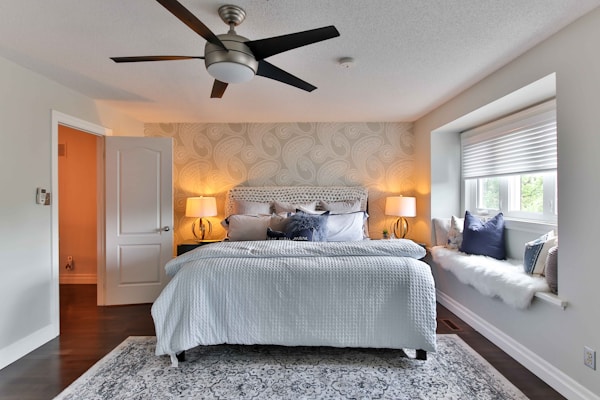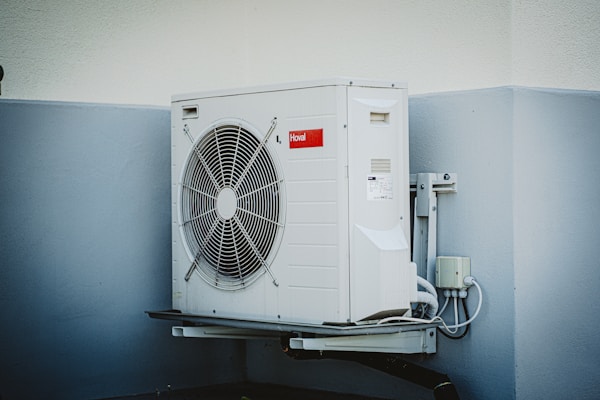Indoor stuffiness can be a persistent problem for many homeowners regardless of the season. There are a few things you might consider for banishing room stuffiness and boosting indoor air quality. Let's take a look at some tips for making the rooms in your home feel less stuffy.
Use a ceiling fan.

If you are thinking about how to make a room less stuffy, using a ceiling fan could help. Ceiling fans circulate the air in a room, helping to even out the temperature and making the space feel less stifling. Additionally, ceiling fans can help to dry out any dampness in the air, further improving the stuffiness of a room. To get the most benefit from a ceiling fan, make sure to place it in the center of the room and set it to spin in the right direction according to the season.
Along with your fan, you should ensure that your vents are open. If they are not, then opening them can help to improve air circulation and make the room feel less stuffy. The air coming from your vents can work with your ceiling fan to cool down the room and move more air around the space.
Use a dehumidifier.
Room dehumidifiers are devices that remove moisture from the air. They are often used in homes and businesses to control humidity levels and reduce the feeling of stuffiness in a space. There are a few things to keep in mind when using a dehumidifier. First, make sure that the unit is the right size for the space that you want to use it in. Second, be sure to empty the unit's water reservoir regularly. Third, keep the unit in a well-ventilated area to ensure that it can work properly.
Using a dehumidifier can help to make a room feel more comfortable by reducing the level of moisture in the air. Reducing moisture can also help to decrease the risk of mold and mildew growth, reduce the level of dust and other allergens in the air, and improve the overall indoor air quality.
Check your air filters.

If your room feels stuffy, one of the first things you should do is check your air filters. Most homes have at least one air filter, and often, they are located in the furnace or air conditioner. These filters trap dust, pollen, and other airborne particles, and over time, they can become clogged. When this happens, the airflow in your home is reduced, and the air can become stuffy. In general, you should replace your air filter at least every three months.
To check your air filters, start by looking at the manufacturer's instructions. In most cases, you'll simply need to remove the old filter and insert a new one. However, it's important to make sure you're using the right size and type of filter for your furnace or air conditioner. If you're not sure, you can always call a professional to help you out.
Once you've replaced your air filters, you should notice an immediate improvement in the indoor air quality in your home. The air will also feel less stuffy, and you may even notice that your furnace or air conditioner is running more efficiently.
Open the windows.

Opening the windows is one of the quickest and easiest ways to make a room less stuffy. If it is safe to do so, open the windows to let in the fresh air and circulate the stuffy air out of the room. Allow the room to ventilate this way for at least half an hour. When you do this regularly, your home won’t have time to develop that stuffy feeling.
When the rooms in your home are stuffy, it can feel uncomfortable and even make it difficult to sleep or relax. If you notice that the air in your house feels stuffy, you'll want to ensure that your AC is working properly. Additionally, you can try using a dehumidifier and your ceiling fan. If the problem persists, you might consider speaking with a qualified HVAC technician to offer more solutions.






